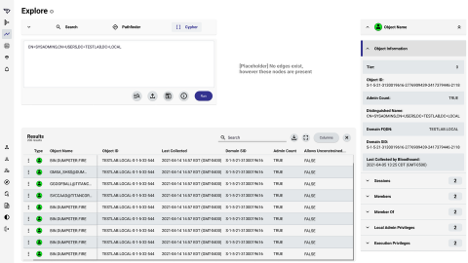
The security company SpecterOps has announced the release of the latest version of its open source Attack Path Management tool BloodHound.
BloodHound allows companies to uncover hidden or unintended relationships in Active Directory, Entra, and Azure so that they can map potential attack paths.
The latest release, version 8.0, introduces BloodHound OpenGraph, which will allow companies to ingest data from systems other than the three mentioned above, such as GitHub, Snowflake, and Microsoft SQL Server.
According to the company, by expanding BloodHound to other services, users will be able to uncover new attack paths across their environments.
“BloodHound OpenGraph is a foundational shift toward comprehensive identity risk management across the entire enterprise and opens many exciting paths for BloodHound in the future,” said Justin Kohler, chief product officer at SpecterOps.
BloodHound 8.0 also introduces Privilege Zones, which allows users to set up specific zones within their environment for apps that require more advanced protection, such as business-critical apps or apps subject to regulatory requirements.
Integrations with two new services were also added in this release: ServiceNow (for ticketing and monitoring vulnerabilities) and Duo (for enabling two-factor authentication).
Other new features include support for Kali Linux, a table view for attack graph data, inheritance tracking, and the ability to bookmark views and share them with their team.
The Enterprise version of BloodHound 8.0 also adds support for Microsoft Privileged Identity Management (PIM) roles. This will allow users to see what roles are in use and if they are configured correctly and securely. According to SpecterOps, PIM roles can sometimes hide attack paths that were considered to be eliminated, so this support will further reduce risk exposure.








